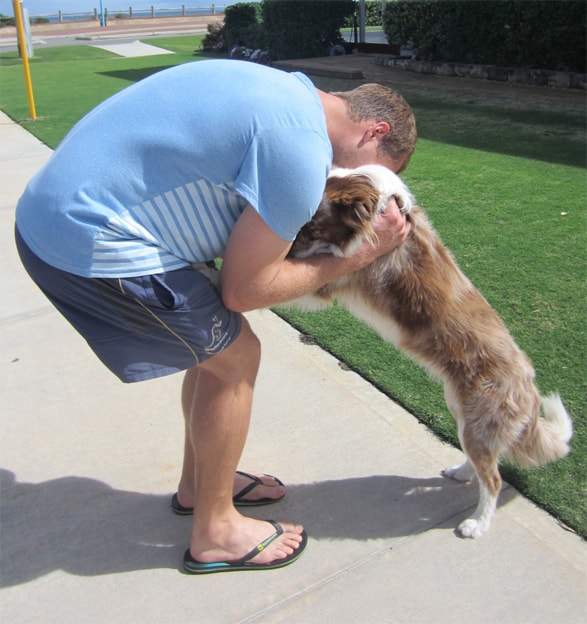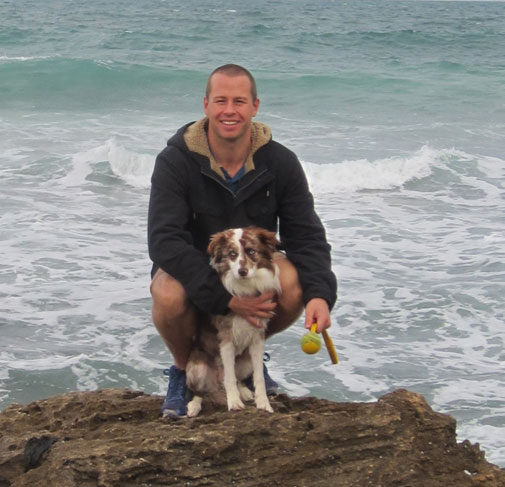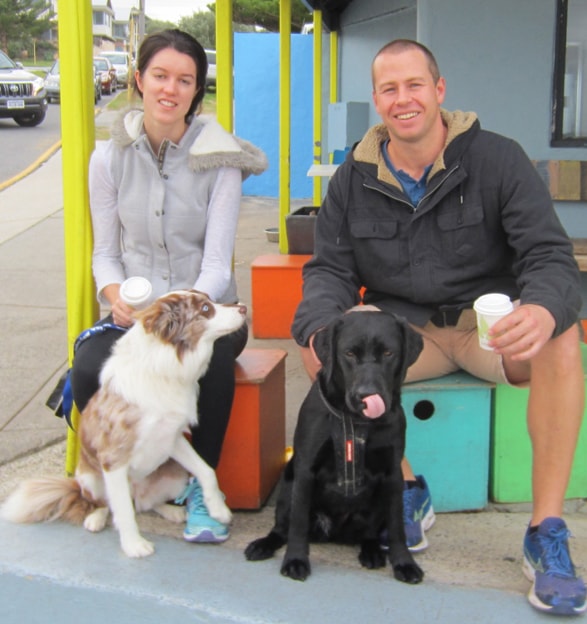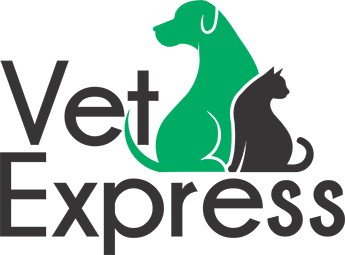Dog Behaviour - My First Love

*Vet express assumes no responsibility to damages incurred due to dog behaviour. Information is general in nature only, designed to inform and enlighten. Opinions differ between animal experts. I am not a specialist in behaviour.
I am incredibly passionate about dog behaviour, good and bad. Being from South Africa I experienced dog aggression firsthand and the far reaching, devastating consequences. Aggressive dogs are not born, they are made. Irresponsible breeding, ignorance, neglect, poor nutrition and low mental /physical stimulation are all contributing factors. My dogs, “Maxi” and “Mossy” are not perfect examples of well-behaved dogs. What makes them good dogs is that as an owner I am aware of my mistakes and I address these mistakes immediately. Let me guide you into developing a greater understanding of both you as an owner and what your dog needs from you. In the following paragraphs I have outlined some examples, given some tips and explained some of the issues concerning dog behaviour.
Mental Relaxation And Confidence
Pure relaxation and simply enjoying life! I feel that way when I am with my dog “Mossy”. Walking along the beach or through the park I always take “Mossy” with me. My mental state influences my body language and this transfers to Mossy’s mental state and consequently - her body language, which is all important. This creates a positive cycle and communicates to everyone and every dog that we are not a threat. I wish behaviour training was this simple! In essence this is what I strive to achieve with my clients. It is possible with client education, client training and lastly dog rehabilitation and training. I believe that every dog that displays inappropriate aggression can be rehabilitated. I also believe that the clients need to change first before their dog can change.
Furthermore, I always ask my wife to trust my dog “Mossy” because Mossy loves to chase her cats! At no point have I ever been concerned that Mossy will bite the cats. That is because I know and trust Mossy! This trust does not occur overnight, it develops through extensive observation, training and time spent together. My wife simply does not spend the same amount of time with Mossy as I do. If you put in the time and effort to truly observe your dog then you will develop trust which is priceless!

Dog Handling
I believe some people literally don’t know how to give their dog affecton correctly. How sad! Firstly, affection should only be given when your dog is calm, obedient and receptive to it. Generally, when patting a dog, the hand is placed over the top of the head and smoothly run backwards, down the neck to the base of the shoulders. The chest and sides (ribs) should also be massaged as well as the stomach. Again, the dog should remain calm when affection is given, excitement should not occur before during or after the process. It is a quiet, calm, bonding and reuniting process. The dog’s body language is calm and submissive at this point.
Simple Rules When Acquiring A Dog

- Consult a veterinarian before purchasing a dog. Discuss appropriate breeds with your vet. Be prepared that your vet may indicate some alternative breeds.
- Find a responsible breeder/reputable shelter - do not purchase a dog from someone who is unreputable. You would be directly supporting negative activity. Your vet can guide you in this area.
- Go to puppy school! Get your pup vaccinated and socialized! Probably the most important activity you will ever do with your dog. Your local vet probably has puppy classes every week.
- Go to obedience classes and formal dog training. Vet Express offers personalized training methods.
- Find an exercise and play activity that you and your dog can do for life! Go to dog friendly cafes and specialized dog parks. Go to the dog beach, every day if possible! Some examples below:
Yelo Cafe (Trigg) - Bennion Street Dog Beach
Voyage Cafe (Sorrento) - Pinnaroo Point Dog Beach
Charles Riley Dog Park (North Beach) - Whiteman Park Dog Park
Fur Baby Cafe - Westminster/Nollamara - Make a special bond with your dog for life. Your dog will teach you the true meaning of life, unconditional love! Your dog needs a central, guiding force in their life!
Myths And Misconceptions
Lets start here! There are no hard and fast rules with behaviour. It is far too fluid a concept.
- Do not let dogs on beds or couches, they will become disobedient.
- Do not let dogs jump up when meeting people, it will encourage dominance behaviour.
- Do not let dogs lick your face, it will encourage biting.
- Do not engage in play fighting or roughhousing, this will make dogs aggressive.
These ideas are examples of very one dimensional thinking and do not demonstrate an in depth understanding of dogs. Let’s explore some more dynamic ideas.
- Dogs can sense our moods and weaknesses plus the relationships we have with other humans. This is incredibly important. Stable human relationships benefit dogs as well as children.
- If allowed to do so, dogs can become dominant and aggressive. Dogs will try your patience at times. It is important to remain patience and consistent with training and commands.
- Dogs are opportunistic in nature. If you leave food on the kitchen bench and go outside to do something, the food may be gone! If a dog realizes that aggressive behaviour towards another dog goes undisciplined ie. they get away with it, guess what? The behaviour is reinforced. Consistency in discipline is incredibly important. Staying calm is the hardest part!
- Dogs have a clear sense of hierarchy/pecking order, this needs to be kept in mind and appropriately reinforced.
Wow, what a friendly looking dog, look at his wagging tail! A fluffy, labradoodle is lost in the suburbs and the eager human approaches with the best intentions. Bam! “Lacie” has just bitten into Jeff’s hand causing extensive, permanent nerve damage in his thumb. What went wrong? Furthermore, the damage could have been a lot worse. A child could have lost an eye. Fortunately, we can prevent events like this from occurring in the first place.
Communicating With Your Dog
Choosing The Appropriate Breed
I have a Border Collie as you know. Talk about high energy! Luckily, I enjoy long walks, going to the beach/dog park and throwing her a ball. If I did not fulfil her activity needs I assure you my garden would be destroyed!
Exceptions - Golden Retrievers, incredibly mellow creatures, a personal favourite!
Mixed breeds and rescue dogs. These dogs do not fit the conventional mould and some absolute champion dogs come out of shelters. Careful consideration should be paid to getting a mix or rescue. As a vet, I have met almost every breed of dog on the face of the earth. Guess what, I have also worked with and handled them thus I understand which breeds are more demanding than others. I offer a personalized service regarding getting a dog or a puppy which involves extensive research, assessment of your home environment and human suitability.
Some examples - good and bad!
Border Collies, Kelpies and other Shepherding breeds - these are working dogs in every sense of the word. They have boundless energy and if this is not drained daily then issues can occur. Excess energy can be channelled into destructive behaviour - digging up gardens, chewing objects and inappropriate aggressive behaviour towards dogs, other animals, humans and children. If however, you are willing to spend time and energy fulfilling their working needs they make fantastic companions and form deep bonds.
Chihuahuas. These dogs need to be well socialised as puppies. Many a vet has experienced their wrath! They bond very strongly with one owner and experience separation anxiety when alone. They make great lap dogs and are excellent company. Dental care is crucial as they are inclined to develop tartar and gum disease. Often, mental stimulation goes unaddressed. Chihuahuas benefit from being kept company as much as possible and enjoy travelling with their owner. Luckily, they are tiny and can easily fit in a handbag! Careful consideration when kids are around as they are often stepped on or dropped accidentally.
Staffordshire Bullterriers are pound for pound the strongest animals on the face of the earth! If you are not physically powerful as a human then guess what chances are your Staffy is stronger than you are, not ideal! They need a lot of attention and time.
Greyhounds make beautiful pets. They do not need a lot of exercise. Daily walks will suffice. They are incredibly sensitive and obedient dogs, often come toilet trained!
Great Danes are beautiful and soft natured. They need a lot of time and can become aggressive if not managed correctly.
A human with low energy output in terms of walking a dog would be best suited to a lap dog. King Charles Cavaliers, Chihuahuas, Maltese poodles and so on. It is very important to get this energy pairing concept right.
Early Development
Ultimately, the client would be concerned as to the personality of their dog and the social interactions capable, especially the negative. Where does all this start? Genetics would be the first place to look. What were the mother and father like? Grandmother and Grandfather? This information is often not that accessible to clients. It is incredibly important.
If the mother or father was inclined to aggressive or hyper-excitable behaviour there is an incredibly high likelihood that the puppy will start their lives on this tack. Fortunately, genetics is not the full story. At birth, a mothers nurturing, the environment, noises/smells and other puppies come into play. It is essential that the newborn pup receives adequate milk, attention from the mother, is privilege to a clean and peaceful environment. Fast forward a couple of weeks and massive social development has already occurred between pup, mother, other puppies, a human or two and possibly other animals/smells and an array of noises/sounds (some distressing/some soothing).
If this stage of social development is halted too early behaviour problems may arise. Trauma shortly after birth ie. a sick or injured puppy that needs to be hospitalized will have extensive behavioural ramifications. Mostly, puppies need to be left alone with their mother until six weeks of age (roughly the age of weaning). The mother will teach them how to behave during this time. She will administer subtle discipline and establish a hierarchy between pups. The importance of a good, stable mother cannot be overstated. Mother dogs that have a litter too young or who have behaviour issues themselves are a potential recipe for disaster.
Time Poor? Don’t Get A Dog!
All dogs require our attention and yes our time! I spend a minimum of 3 hours with my dog everyday. This includes walking/ball throwing, going to a coffee shop/dog park etc. “Mossy” watches television with us and sleeps on our bed, this is not included in the 3 hours.
I would say a minimum of 1 hour should be devoted to active exercise. Dogs have incredible natural energy levels, they are after all endurance athletes. If this energy is not devoted to physical activity they will unleash it in negative ways.
- For example, Butch, a 2 year old male desexed, American Staffy is jumping up onto people occasionally, also chews furniture and barks a lot. This is a minor issue. Probably increase Butch’s exercise regime to hourly daily walks, increased socialization and possibly short term medication. Also, improve owner education regarding dog behaviour.
- Another example, Sadie, a desexed female 3 year old Red Heeler cross Staffy is starting to attack other dogs without obvious warning. This is a major issue. The common techniques used above may not necessarily work. An in depth analysis of Sadie’s past is required. She needs to be handled by an expert. Serious owner attention, re-education and training is required.
- Furthermore, Cody, a 2 year old, desexed male Great Dane is biting children. What a nightmare! A certain possibility that Cody will end up being euthanized. What a tragic loss of life and how traumatic for the children involved. The approach with Cody needs to be drastic and unfortunately things are not looking good.
In the example of Sadie, exercise would be a fantastic approach to try and achieve a reduction in aggression. Specific triggers can later be identified.
By far the most complex area of study in my opinion. I would find many other veterinarians who would agree! Also the most fascinating and challenging. How do you stop an aggressive dog from re-offending - medication and training? The answer is far more multifaceted. The most complex surgery or medical regime has a defined target area, something specific has become diseased and has to be removed or replaced. With behaviour an area(s) of the brain has become damaged over time and most likely damage has occurred whilst in the early developmental stages of the dog’s brain. The brain of a developmentally damaged dog is often far different to a normal dogs brain. This makes training, rehabilitation and medical treatment especially challenging and dynamic.
